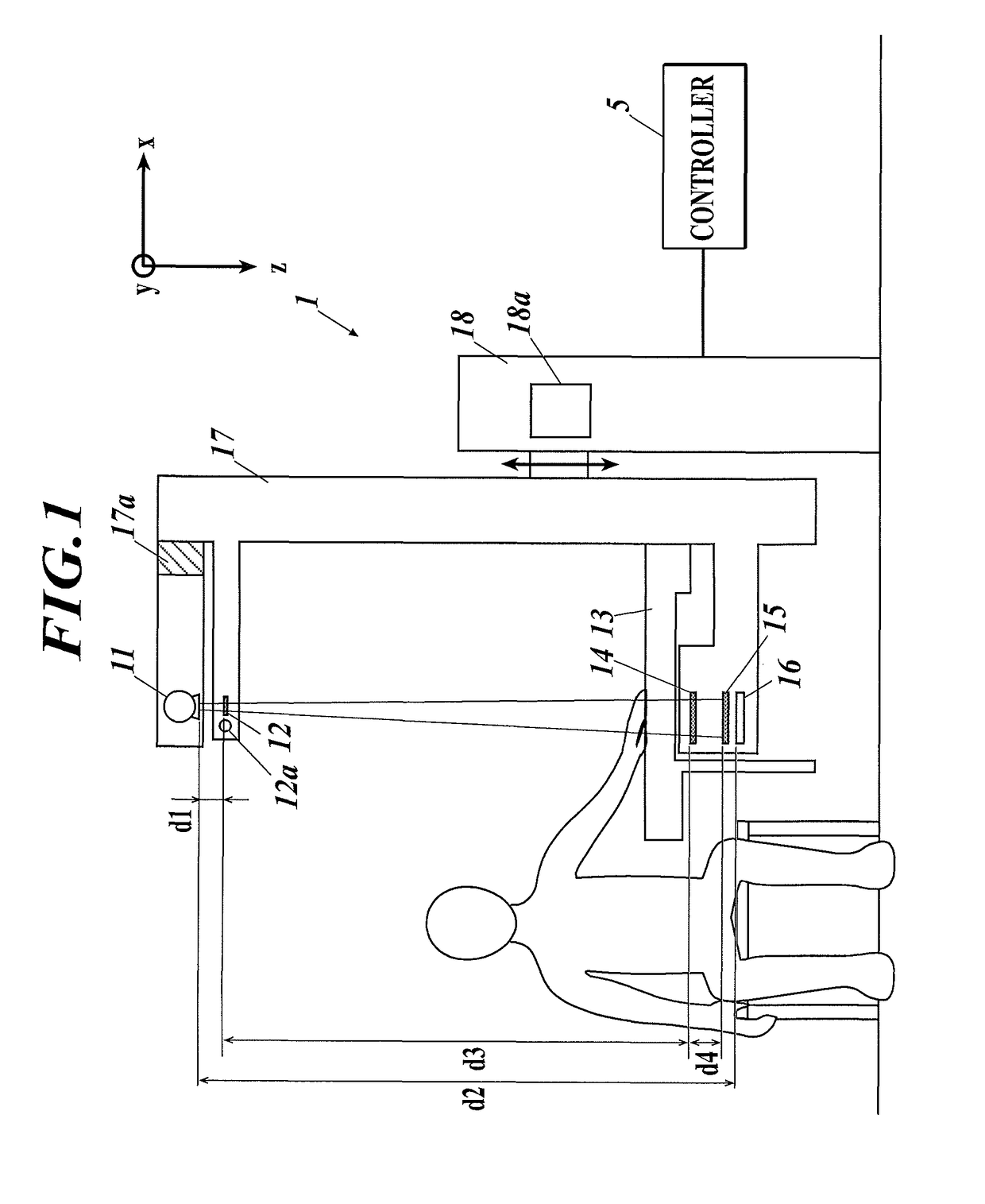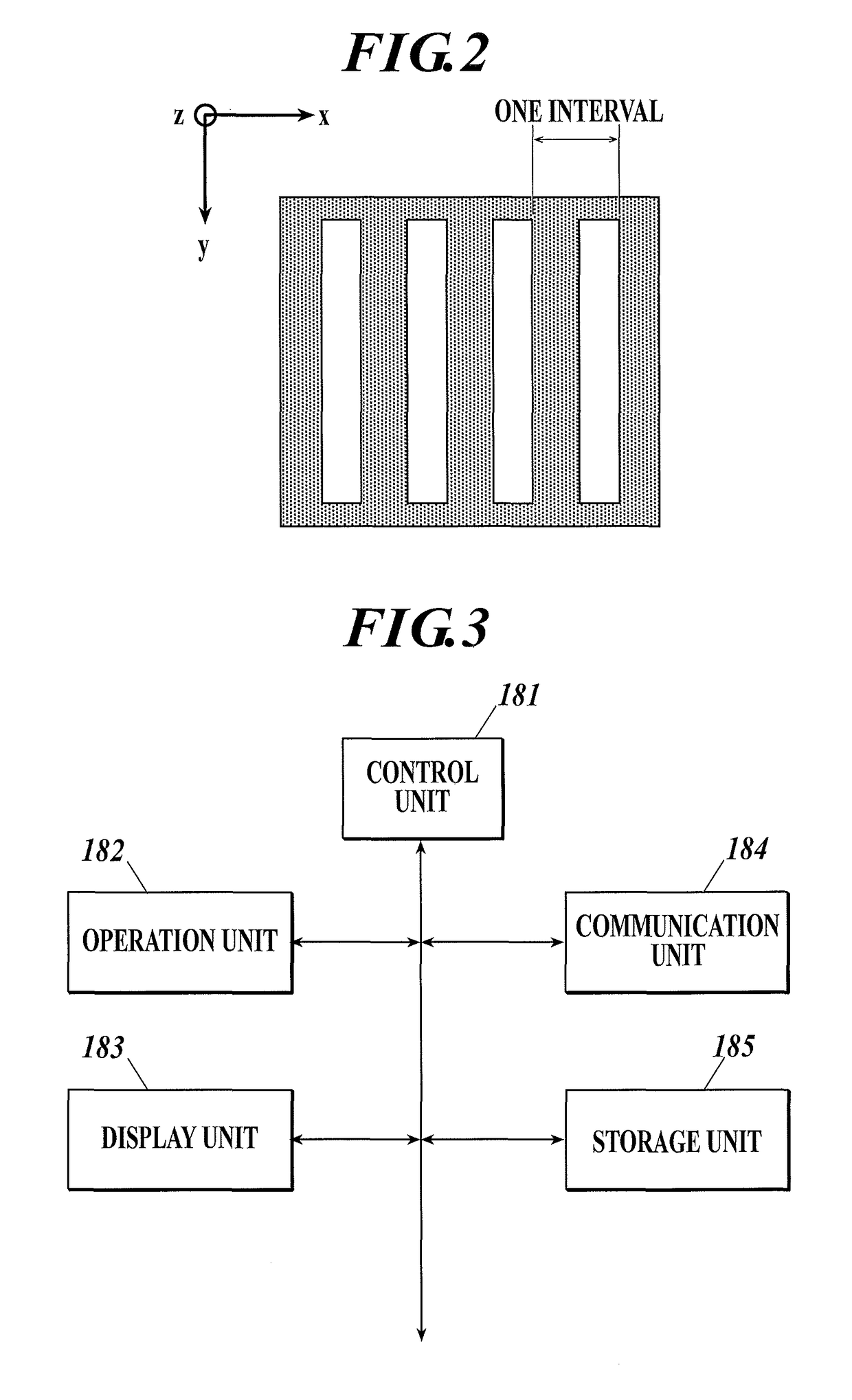Radiation imaging system and image processing device
a radiation imaging and image processing technology, applied in the field of radiation imaging systems and image processing devices, can solve the problems of difficult to accurately judge the change in signal(s), difficult to detect image quality deterioration, and physical quantities determined by imaging may contain errors
- Summary
- Abstract
- Description
- Claims
- Application Information
AI Technical Summary
Benefits of technology
Problems solved by technology
Method used
Image
Examples
Embodiment Construction
[0046]In an embodiment below, the present invention is applied to a radiation imaging system using a Talbot-Lau interferometer. However, the present invention is not limited to one using a Talbot-Lau interferometer and hence is applicable to any radiation imaging system which uses at least a first grating, takes a plurality of periodic pattern images based on projection of the first grating or radiation intensity modulated by Talbot effect, and obtains at least two of a differential phase image, a small-angle scattering image and an adsorption image by calculation based on the principles of fringe scanning.
[0047]Hereinafter, an embodiment of the present invention is described with reference to the drawings.
[0048]FIG. 1 shows a radiation imaging system according to an embodiment of the present invention. The radiation imaging system includes a radiation imaging device 1 and a controller 5. The radiation imaging device 1 performs X-ray imaging (fringe scanning) with a Talbot-Lau inter...
PUM
 Login to View More
Login to View More Abstract
Description
Claims
Application Information
 Login to View More
Login to View More - R&D
- Intellectual Property
- Life Sciences
- Materials
- Tech Scout
- Unparalleled Data Quality
- Higher Quality Content
- 60% Fewer Hallucinations
Browse by: Latest US Patents, China's latest patents, Technical Efficacy Thesaurus, Application Domain, Technology Topic, Popular Technical Reports.
© 2025 PatSnap. All rights reserved.Legal|Privacy policy|Modern Slavery Act Transparency Statement|Sitemap|About US| Contact US: help@patsnap.com



